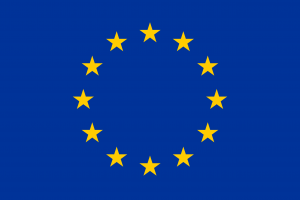EU Statement at the UNTOC Working Group on Firearms, 3 May 2023
Distinguished Chair, dear colleagues,
I have the honour to speak on behalf of the European Union (EU) and its Member States. The following countries align themselves with this statement: North Macedonia*, Montenegro*, Serbia*, Albania*, Ukraine*, Republic of Moldova*, Bosnia and Herzegovina*, Georgia and Iceland+.
Mr Chair,
I began last year’s statement by pointing out that while we are talking about firearms, an armed aggression is taking place within driving distance from Vienna. We also pointed out that Russia’s war of aggression against Ukraine constitutes a serious obstacle to effective international cooperation on firearms. Unfortunately, one year later, Russia is still pursuing its illegal aggression against Ukraine. Therefore, at the outset, let me express the EU and its Member States’ continuous full solidarity with and support for Ukraine and the Ukrainian people, and for its sovereignty and territorial integrity within its internationally recognized borders. The EU condemns in the strongest possible terms Russia's unprovoked and unjustified military aggression against Ukraine, which grossly violates international law, above all the UN Charter, and undermines international security and stability.
Russia’s war of aggression against Ukraine has increased the threat of firearms trafficking to the EU as well as to other regions. The EU has learned from the experiences in the Western Balkans and is already working together with Ukraine, the EU Member States and other states, for instance in the framework of the European Multidisciplinary Platform Against Criminal Threats [EMPACT] to counter this threat.
Since 2019, the EU by means of several Council Decisions has been supporting Ukraine’s efforts to combat illicit trafficking in weapons, ammunition and explosives. In addition, specific efforts are made to increase controls at the EU’s external borders, including with the support of specific EU funded projects and at operational level with the European Police Agency [EUROPOL] and the European Border and Coast Guard Agency [FRONTEX]. We are also mindful of the disinformation campaigns launched by Russia regarding this threat. Let me underline that so far, no large scale firearms trafficking in relation to the war has been identified. We can say that we have a good and extensive cooperation with the Ukrainian government, and we are grateful to them for prioritising this threat.
Turning to the topics on the agenda, and in particular Item 2, strengthening international and inter-agency cooperation and coordination mechanisms, the EU welcomes the different initiatives of UNODC and other international stakeholders and would like to stress the importance of this issue for the EU. In order to achieve the desired objective, the EU strongly encourages cooperation among all actors involved, and close coordination among the different initiatives on this matter.
The EU has been advocating the establishment of National Firearms Focal Points through annual coordination meetings and through the adoption of Council Conclusions [of 13 July 2021] on the implementation of National Firearms Focal Points, and on the tasks these focal points should be tackling.
Furthermore, since 2010, the European Multidisciplinary Platform against Crime Threats [EMPACT] on firearms has been gathering law enforcement, customs and judicial agencies from EU Member States but also from multiple other countries in the field of the control of firearms, essential parts and ammunition and the fight against their trafficking. EMPACT is considered a flagship of the EU in the field of combatting crime and has proven extremely valuable in strengthening cooperation and improving the exchange of information.
The EU welcomes the discussions on agenda Item 3, the implementation of Articles 3 and 4 of the Firearms Protocol. Sharing common definitions is important to facilitate the agenda topic on international cooperation. Using the same terms does not only allow for the comparability of data and information exchange, it also allows to tackle firearms trafficking in a comprehensive manner. One example are firearms firing small-calibre, so-called “Flobert” ammunition, that were incorrectly not defined as firearms in some Member States. These firearms were originally designed to shoot 9 mm or similar calibre, but a modification in the barrel allows them to shoot 4 or 6 mm ammunition. As a consequence, some EU Member States, have modified their national legislation. The common use of the definition of firearms thus solved an operational threat in the EU.
Last year, the EU informed the Working Group of its work on the revision of the EU Regulation [258/2012] implementing Article 10 of the Firearms Protocol. The proposal from the European Commission has now been published. The scope of application of this proposed revision makes a distinction between civil and military firearms based on the nature of the transaction. This means that if the firearms, essential components and/or ammunitions are destined to reach a civilian recipient, then the rules and procedures of the EU Regulation would be applicable. The proposal is now being intensively examined and discussed by the Council of the EU and the European Parliament.
Lastly, under the UNTOC review mechanism, the EU is in charge of the review of Greece and Cyprus for their implementation of the Firearms Protocol. At the same time, the EU is finalising its own self-assessment, which will be reviewed by Austria and Saint Kitts and Nevis.
Thank you, Mr Chair.
* Candidate Countries North Macedonia, Montenegro, Serbia, Albania and Bosnia and Herzegovina as well as potential Candidate Country Georgia continue to be part of the Stabilisation and Association Process.
+ Iceland is a member of the EFTA and of the European Economic Area.
